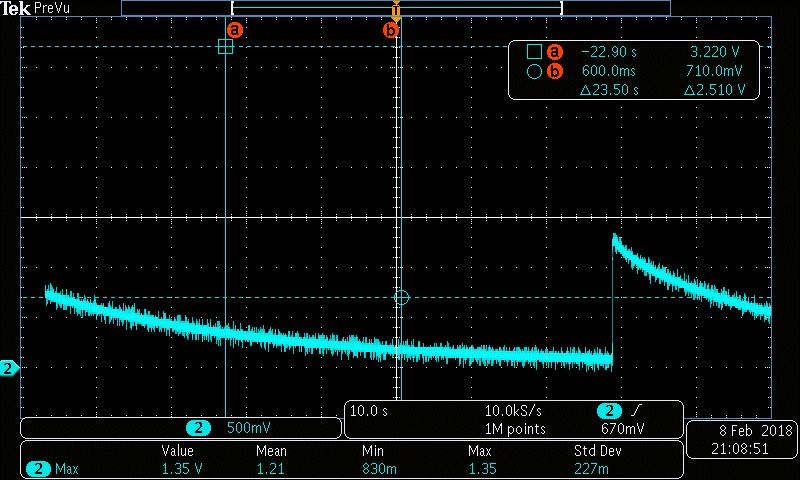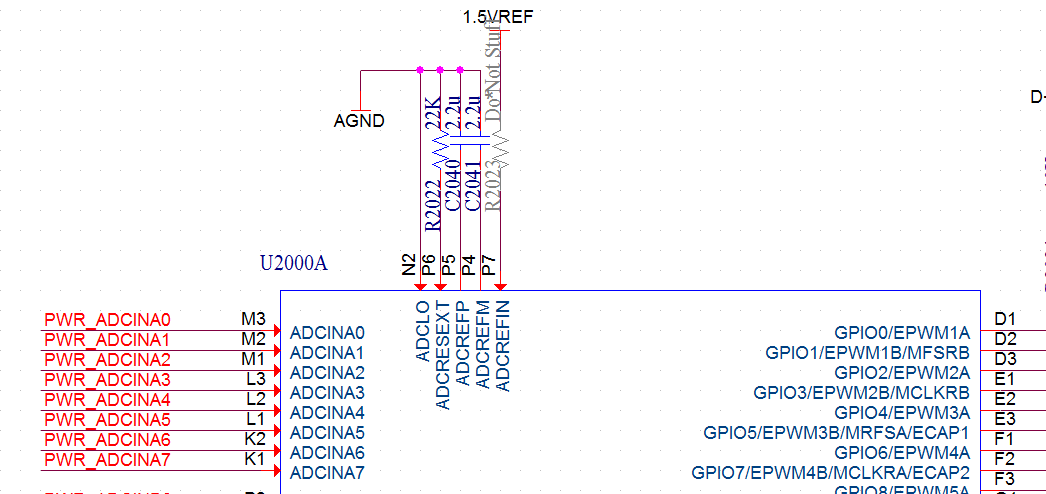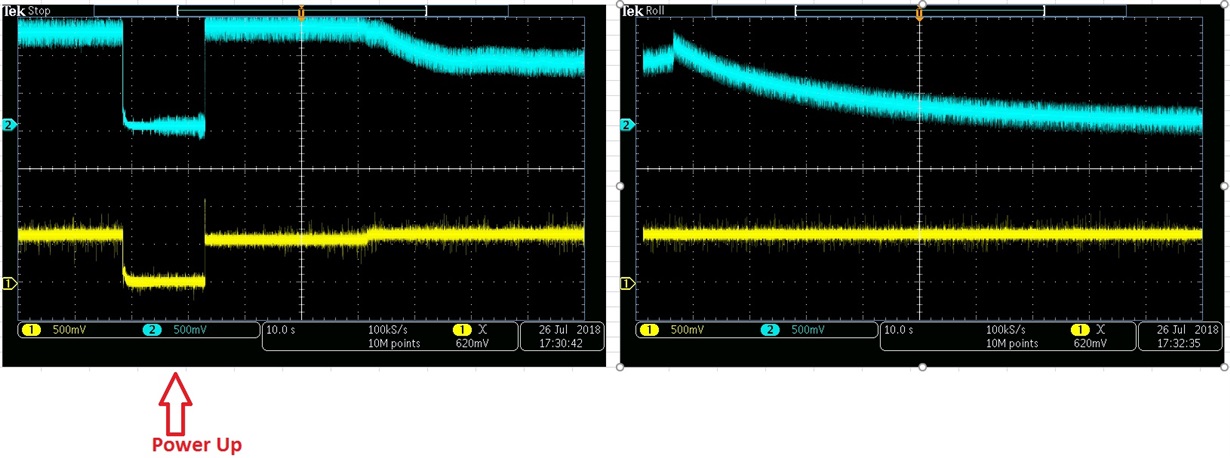Hi ,
I measured tooth wave 0.1-- 1.35Volt , Period of 60-100 seconds on several 28335 DSPs ADCREFP output.
The issue occurred after 1 day of operation in one case and after 60 days in another .
The software is Ok.
ADCREFIN was floated on this revision of PCBs. ADCREFIN connecting to AGND with wire not helps.
Please advise.






